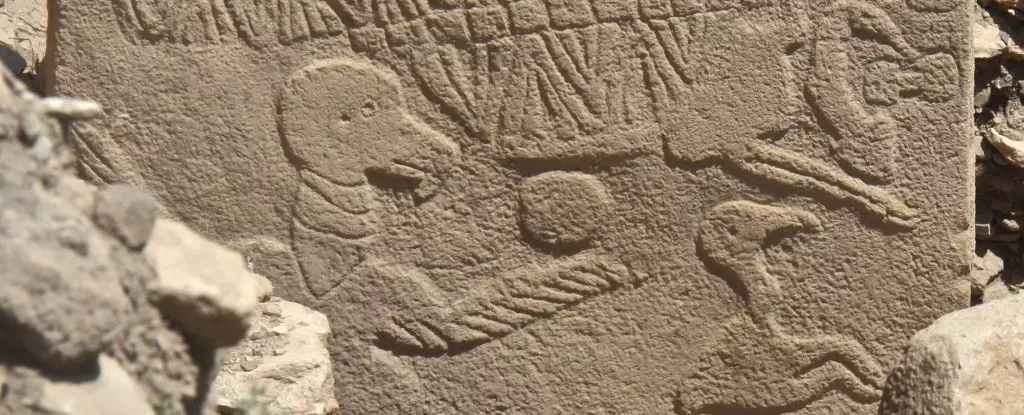The ancient monument of Göbekli Tepe in Türkiye has long been a subject of fascination for archaeologists and historians alike. Dating back over 10,000 years, it stands as one of the oldest temple complexes in existence, offering a glimpse into the lives of a people who existed in a time long forgotten. Recent discoveries at the site have shed new light on its purpose, hinting at the possibility that it may have served as an observatory to track celestial events.
One of the most intriguing findings at Göbekli Tepe is the Vulture Stone, a carved pillar adorned with a figure of a bird surrounded by stylized patterns. Previous research has suggested that the carvings on this stone could represent constellations and may even record a catastrophic comet impact that occurred around 13,000 years ago. According to chemical engineer Martin Sweatman, the V-shaped marks carved onto the pillars could symbolize days, with one pillar potentially representing a year consisting of 365 days.
The Link to Celestial Events
Sweatman’s analysis goes even further, proposing that the symbols found on the pillars at Göbekli Tepe could be tied to cosmic events such as solstices and meteor showers. The presence of V symbols worn by the bird of prey on the Vulture Stone suggests a connection to the summer solstice, while other figures on different pillars display similar symbols around their necks. These markings, Sweatman argues, could have been used to track the passage of time and mark significant astronomical events.
While Sweatman’s findings offer a compelling interpretation of the carvings at Göbekli Tepe, they have not been without controversy. Archaeologists working at the site have raised concerns about the validity of his conclusions, highlighting the need for further investigation and discussion. Despite the skepticism surrounding his work, Sweatman remains convinced that the inhabitants of Göbekli Tepe were skilled observers of the sky, driven by the desire to understand the world around them in the aftermath of a catastrophic comet strike.
The revelations emerging from Göbekli Tepe have profound implications for our understanding of ancient civilizations and their technological capabilities. The ability of Neolithic peoples to track celestial events and mark the passage of time speaks to the sophistication of their cultures, challenging conventional notions of progress and development. As we continue to unravel the mysteries of Göbekli Tepe, we may gain valuable insights into the origins of human civilization and the ways in which our ancestors interacted with the cosmos.
The discovery of a potential calendar at Göbekli Tepe opens up a new chapter in the study of ancient monuments and the societies that created them. By decoding the symbols and carvings left behind by our distant ancestors, we can piece together the puzzle of their lives and shed light on the profound connections between humanity and the natural world. While debates and disagreements may persist, the quest to uncover the truth behind Göbekli Tepe’s secrets remains a journey worth pursuing.

Leave a Reply